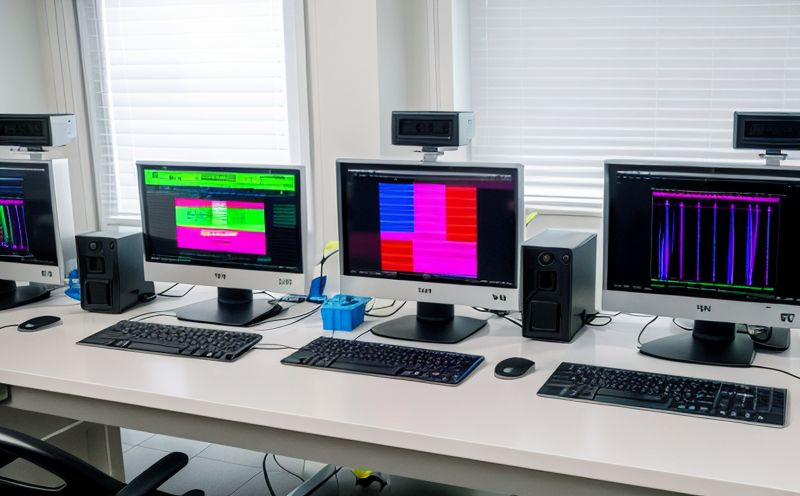ASTM E2011 Quantification of Viral Particles Using Plaque Assays
The ASTM E2011 standard provides a robust framework for quantifying viral particles through plaque assays, a widely used technique in virology. This method is pivotal in ensuring the accuracy and reliability of viral particle counts, which are crucial for regulatory compliance, quality control, and research. Plaque assays are particularly valuable when dealing with viruses that do not easily proliferate in liquid media.
The process begins by inoculating a monolayer of host cells onto an agar medium within a petri dish. The virus is then added to the inoculated cells, where it replicates and forms plaques—distinct areas of cell death surrounded by newly infected cells. These plaques are counted under a microscope, providing a direct measure of viral particle concentration in the sample.
The ASTM E2011 standard ensures that this process is carried out with precision to minimize variability and error. The technique's accuracy is enhanced through stringent quality control measures and strict adherence to protocol, which includes standardized media, cell lines, and incubation conditions.
One of the key advantages of plaque assays is their ability to detect live virus particles, making them particularly useful for assessing viral viability in therapeutic products or environmental samples. This method is widely used in pharmaceutical research and development, quality assurance, and environmental monitoring. Compliance with ASTM E2011 ensures that results are consistent with international standards, enhancing the credibility of the testing process.
While plaque assays have limitations, such as time-consuming preparation and potential for error if not conducted properly, they remain a gold standard in viral particle quantification. The ASTM E2011 standard addresses these challenges by providing detailed protocols and quality control measures to ensure accurate results.
The importance of this method cannot be overstated, especially in fields where the presence or absence of viruses is critical for product safety, efficacy, and regulatory compliance. By adhering to ASTM E2011, laboratories can provide reliable data that supports informed decision-making in healthcare, pharmaceuticals, and environmental protection.
Why It Matters
The ASTM E2011 plaque assay method is essential for ensuring the accuracy of viral particle quantification. In fields such as biopharmaceutical manufacturing, this method plays a critical role in quality control and assurance. Accurate viral titers are necessary for determining the efficacy of vaccines and antiviral drugs, ensuring they meet regulatory standards.
In environmental monitoring, plaque assays help assess the presence and concentration of viruses in water and soil samples, providing insights into potential health risks to ecosystems and human populations. This information is vital for developing effective mitigation strategies and compliance with international guidelines like WHO's recommendations on safe drinking water.
For academic research, plaque assays enable scientists to study viral behavior and develop new treatments. By quantifying viral particles accurately, researchers can better understand viral replication mechanisms and test the efficacy of antiviral compounds.
The ASTM E2011 standard ensures that plaque assays are conducted consistently across different laboratories, enhancing reproducibility and comparability of results. This is particularly important in collaborative research projects or when data needs to be shared between institutions for regulatory submissions.
Scope and Methodology
| Scope | Description |
|---|---|
| Viral Particle Quantification | Determination of live virus particles in biological samples using plaque assays. |
| Sample Types | Blood, tissue cultures, environmental samples. |
| Application Areas | Pharmaceuticals, vaccines, antiviral drugs, environmental monitoring. |
| Step | Description |
|---|---|
| Cell Preparation | Cultivation of host cells on agar medium in petri dishes. |
| Virus Inoculation | Inoculation of the prepared cells with test sample containing unknown viral concentration. |
| Incubation | Incubation at optimal temperature for virus replication and plaque formation. |
| Plaque Counting | Visualization and counting of plaques under a microscope. |
Customer Impact and Satisfaction
Enhanced accuracy and reliability of viral particle counts through standardized protocols.
Increased confidence in regulatory submissions with consistent, internationally recognized results.
Improved quality control measures leading to safer pharmaceutical products and environmental protection.
Simplified compliance with international guidelines like WHO's recommendations on safe drinking water.





